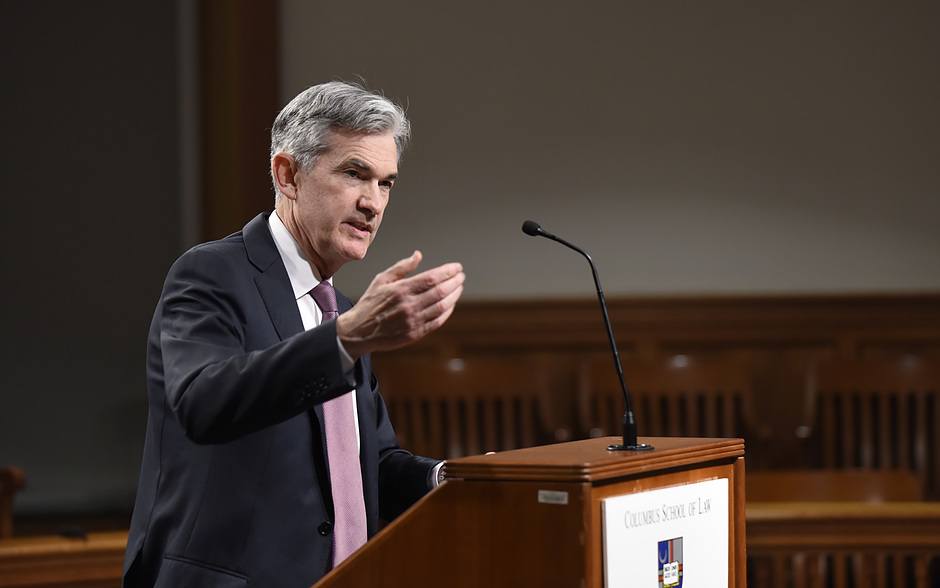Fed Preview: The good, the bad, and the ugly factors that determine the dollar's reaction
- After shifting to neutral mode, the Fed is set to leave its policy unchanged.
- Markets expect the next move to be a cut, but it is not necessarily on the cards.
- Three factors will determine the reaction: employment, inflation, and fresh growth figures.
- The Federal Reserve announces its decisions on May 1st, at 18:00 GMT. Fed Chair Jerome Powell holds a press conference at 18:30 GMT.

Traders are holding their breaths ahead of the primary event of the week: the Fed decision. Will the next move be up or down? The answer is critical for the US Dollar.
The world's most powerful central bank has completed its dovish shift and has signaled it will not raise interest rates in 2019. Moreover, it has announced that its balance sheet reduction program would end in September.
The change, announced in March, weighed on the US Dollar for a short time, before markets remembered that the US economy is outperforming other economies. Central banks in other places have also adopted a softer stance and have even gone further with monetary stimulus.
Markets see the next move by the Fed as a rate cut, but they may be mistaken. While the Fed has abandoned its willingness to raise rates, it remained optimistic about the economy, and this view has now been vindicated.
The statement will likely contain subtle changes in comparison to the previous one. Powell's comments in the press conference are similarly unlikely to stray away from his recent public appearances. Markets will scrutinize three factors detailed below. The tone of each of them will help paint a fuller picture and will guide speculators to bet on the next move by the Fed. To raise or to cut?
Here are three factors:
1) The Good: Employment
The US economy continues creating jobs at a fast clip. The slow growth in February was only a one-off. The ~200K increases are encouraging and the unemployment rate is at 3.8%. Other gauges such as the participation rate and the underemployment rate (U-6) are also going in the right directions.
Pay is also moving up. Wage growth conquered the 3% annual gain several months ago and seems comfortable above it. At 3.2%, salaries are rising faster than the frustrating 2.5% that lasted for years.
However, as a robust labor market finally translates to rising pay, isn't job growth supposed to slow down? The ongoing advances show that many people are still on the sidelines and there is still a high level of slack. Employment has yet to reach its limits.
How does the Fed see employment? Will it put an emphasis on the booming market or the potential slack?
Expectations here are high, so any caution on jobs would be seen as dovish and will weigh on the USD.
2) The Bad: Inflation
Prices are not going anywhere fast. It took wages a long time to respond to rising employment, and an increase in inflation is not seen anywhere. Moreover, prices are falling.
The Core Consumer Price Index March decelerated to 2.0%, below expectations. The data pushed down projections for the Core PCE, a different gauge of inflation using a different methodology. Also here, the outcome missed the mark with 1.6%. The latter figure is closely watched by the central bank. It was only able to touch the magic number of 2% before retreating again.
How does the Fed see it? They will likely acknowledge the slowdown. If they do not comment or express concern, the greenback could rise.
However, the Fed could further and hint it will be ready to tolerate higher levels of inflation for some time, in order to compensate for past slow inflation. At the moment, such a school of thought is beyond the realm of orthodox monetary policy. Nevertheless, the Fed has been bold in the past and could surprise in the future.
All in all, an acknowledgment of weak inflation is priced in. Shrugging it off would boost the dollar while opening the door to tolerating higher prices will be USD-negative.
3) The Ugly: Growth
After discussing the employment and inflation, the Fed's two mandates, it's time to move to the overview of the economy: GDP growth.
The latest figure surprised to the upside: 3.2% annualized growth, above expectations and above the norm for the first quarter of the year, which is prone to effects of bad weather.
Nevertheless, the response was not that warm. It was partially a buy-the-rumor, sell the fact, but also two worrying components of the headline number.
First, it was based on weak inflation, thus making nominal GDP less impressive than real GDP, Secondly, inventories contributed a substantial 0.65% to the 3.2% number. When inventories are replenished in one quarter, they tend to be depleted in the next one. All in all, it is a bit more complicated.
The global picture is not that clear either. Europe does not look good, but China, the second-largest economy is already reaping the fruits of its fresh stimulus program. Global headwinds may not be that strong.
What does the Fed think about eh recent growth numbers? Expectations here are more balanced.
If it sees the glass half-full, by saying the US economy is "doing very well", the USD has room to rise. If they remain cautious on the figures and on global growth, there is room to the downside.
Conclusion
The Fed's view on employment (looking mostly good), inflation (softening), and growth (complicated) is critical to understanding if the Fed is more likely to raise rates or cut them, thus impacting the US dollar across the board.
Author

Yohay Elam
FXStreet
Yohay is in Forex since 2008 when he founded Forex Crunch, a blog crafted in his free time that turned into a fully-fledged currency website later sold to Finixio.

















